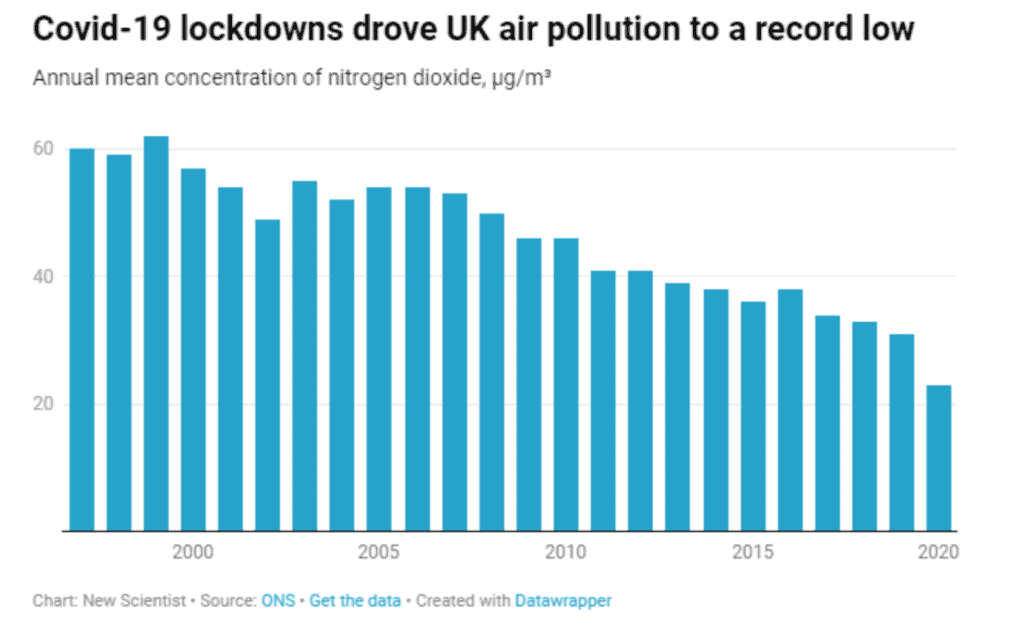It’s been reported by DEFRA that nitrogen dioxide and particulate matter pollution are showing long-term improvements. The report, which looked at a range of measurements and metrics compared pollution levels from 1987 to 2020. During this long, 33 year window, it revealed that in 2020 the lowest levels of nitrogen dioxide (NO2) was recorded. The report also mentioned that the number of hours of moderate or higher levels of nitrogen dioxide at various roadside sites was at the lowest in the year 2020. Defra reported this was partly down to lockdown and the fact there were much fewer vehicles on the road.

Dangers of Nitrogen Dioxide:
Nitrogen dioxide is responsible for a range of harmful effects on human health, including:
- Increased inflammation of the airways
- Worsened cough and wheezing
- Reduced lung function
- Increased asthma attacks
- Greater likelihood of A&E and hospital admissions
New research warns that NO2 is likely to be a cause of asthma in children.
What is Nitrogen Dioxide:
Nitrogen dioxide is one of the nitrogen oxides (NOx) which are a group of air pollutants, which are formed from combustion/burning processes. In urban environments, nitrogen dioxide is mostly due to road traffic. Nitric oxide (NO), which is emitted by vehicles or other combustion or burning processes, mixes with oxygen in the atmosphere, making NO2.
NO2 and other nitrogen oxides are also seen as precursors for a number of dangerous secondary air pollutants such as ozone and particulate matter (PM10 and PM2.5 for example).
More Info on particulate emissions:
We’ve created a number of articles around particulate emissions and pollution – here is a link to a number of our most popular:
PM2.5 in London
Hazards of Open Fires
Wood Burning Stove Misconceptions
One Billion Tonnes of Waste Burnt Each Year
Government Regulations – Stove FAQs
As a company, we are continually looking at developments in pollution control and renewables that lower pollution, on both a local, national and international level. Our fires are at the forefront of green efficiency, technology and sustainability, three elements, which we feel are critical as we move towards a cleaner, greener more sustainable world.








